Salsa Spearfish
Wheel Sizes: 29’’
Suspension Travel:
- Frame: 120 mm
- Fork: 120 mm
Geometry Highlights:
- Sizes offered: XS, S, M, L, XL
- Headtube angle (High): 66.3°
- Reach (size Medium, High): 470 mm
- Chainstay length (size Medium, High): 430 mm
Frame Material: Carbon fiber (standard and DLX layup options available)
Price:
- Complete bikes start at $3,999 USD with standard carbon layup; DLX frame builds start at $6,999 USD (details in Builds section below)
- Spearfish DLX frameset: $3,499 USD (includes Fox Float SL Factory shock)
Blister’s Measured Weight (DLX GX Transmission build, size Large, w/o pedals): 26.46 lbs / 12.01 kg
Test Locations: Washington
Reviewers: 6’, 165 lbs / 183 cm, 74.8 kg
Test Duration: 3 months
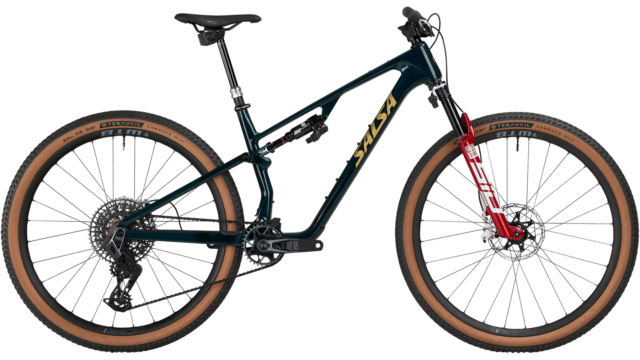
Intro
The updated Salsa Spearfish arrived earlier in 2025, and it’s a timely reflection of how much the XC category has evolved in the past several years. By matching a lower weight with longer, more aggressive geometry, Salsa has squarely aimed the Spearfish at the increasingly versatile — and fun — crop of modern XC bikes.
Let’s first dig into the details of the design changes they’ve made to bring the Spearfish into the world of contemporary XC, and keep reading for our full review below.
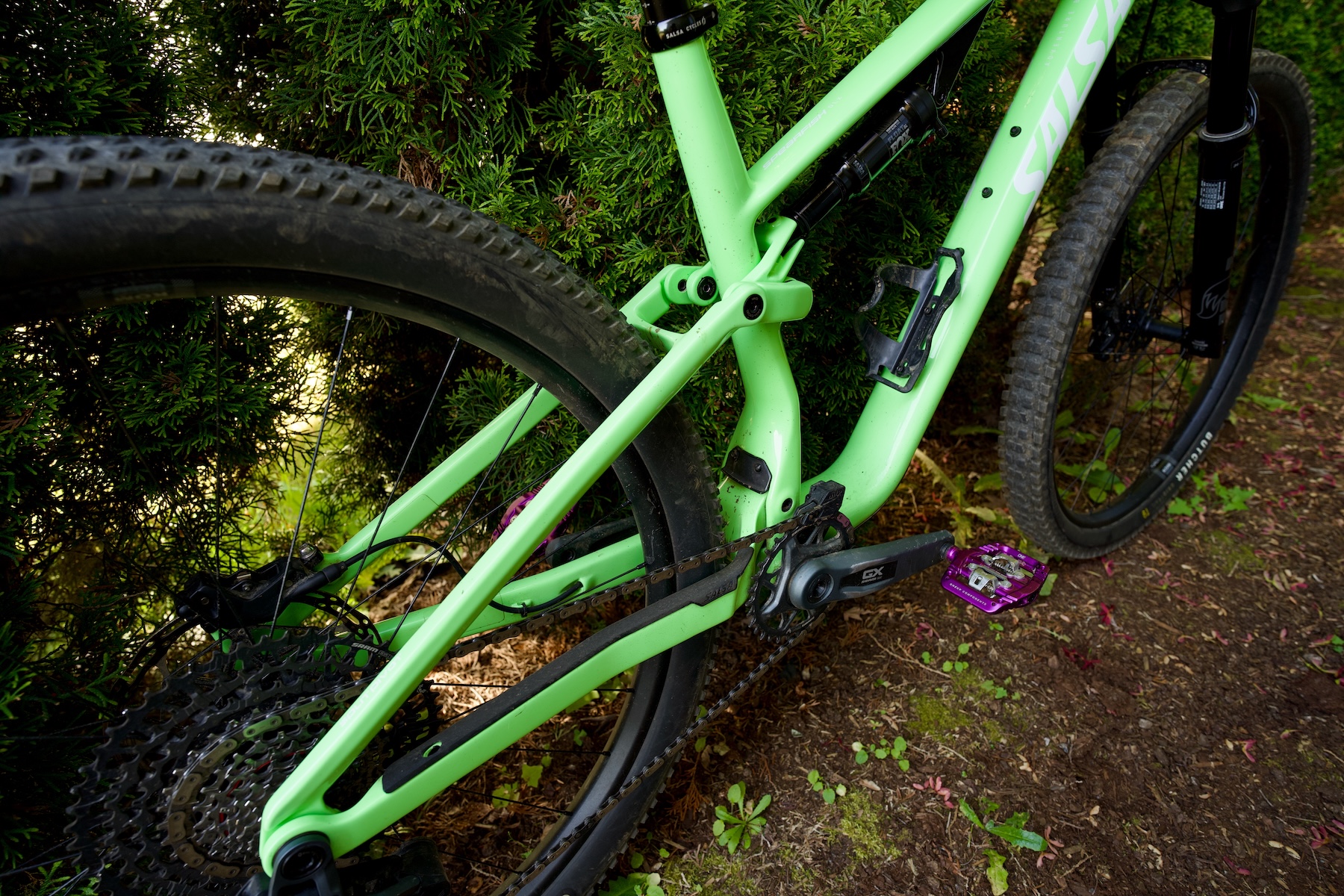
The Frame
Salsa’s Spearfish hadn’t seen an update since 2019, and while some of the features are similar on paper, the new Spearfish is a major departure in many of the details. The old design was built around a 120 mm travel fork, matched to 100 mm of rear travel, delivered via Dave Weagle’s Split Pivot suspension design. That older model was offered in carbon fiber or aluminum constructions, too.
With the new Spearfish, Salsa has bumped the rear travel to 120 mm via a 190 x 45 mm shock. The Split Pivot suspension design remains, in a similar overall layout, with a shock extender driving the horizontally-oriented shock from the rocker link.

From a frame construction standpoint, Salsa has abandoned the aluminum option, instead offering two different grades of carbon fiber construction. The standard layup is used on the two less expensive builds (more build details below), while their DLX frame construction is used on the two more expensive ones, and the frame-only option. According to Salsa, the DLX frame drops 250 grams of weight over the standard one in a size Medium — that’s a solid chunk, especially for a bike targeted at the more weight-conscious XC crowd.
Salsa says the new Spearfish has lost close to a pound in frame weight when comparing the DLX frame to the prior carbon frame, but Salsa certainly didn’t skimp on bottle and tool carry solutions to get there. There are a whopping three pairs of bottle mounts on the downtube of the size Large frame that we’re testing, along with another pair on the seat tube, and Salsa says that the Medium through XL frames can all carry up to three bottles, while the XS and Small can carry two, all inside the front triangle. There is another pair of mounts on the forward portion of the top tube for a computer mount or small bag.
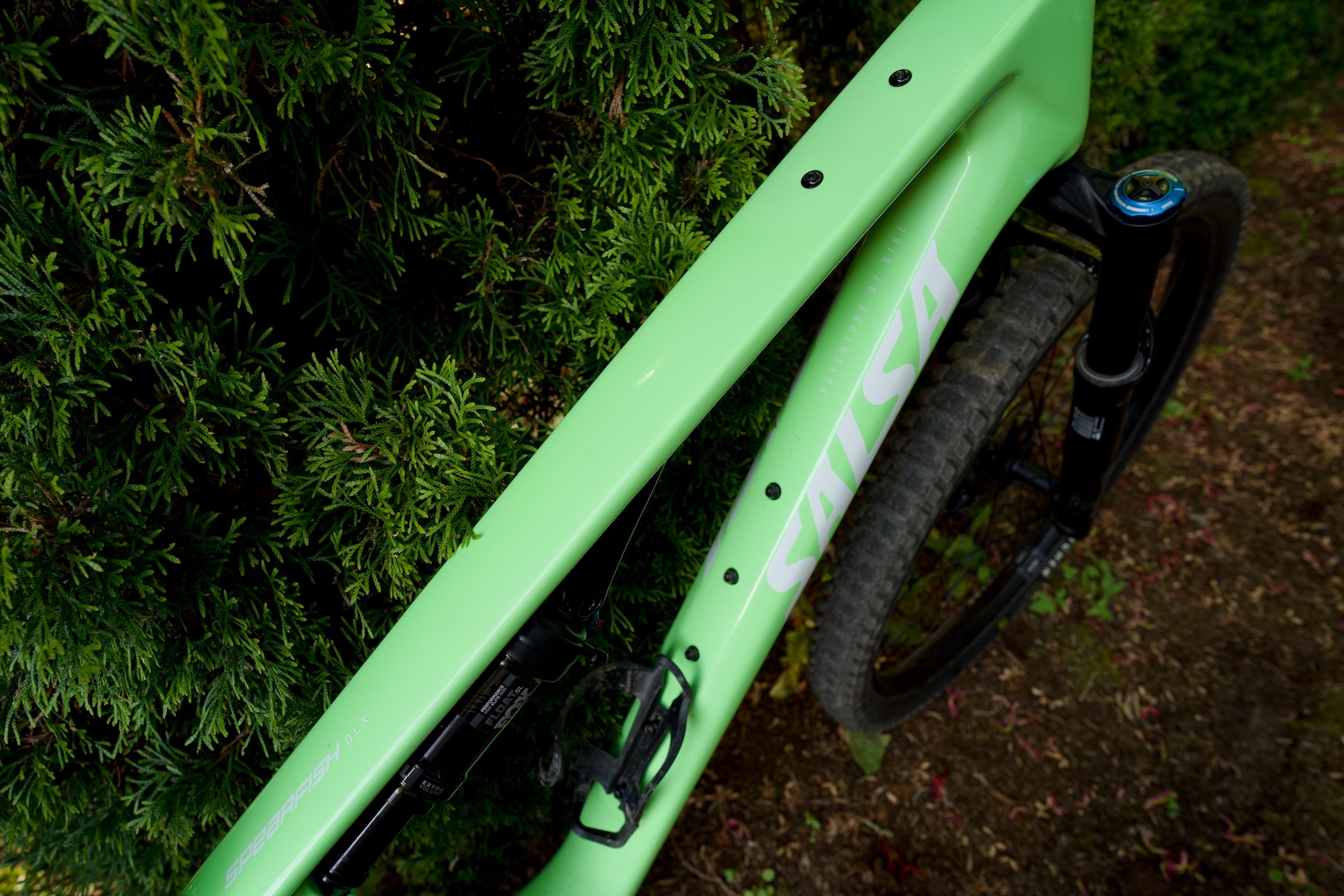

Cable routing is internal, with all of the cables popping out at the left side of the head tube. A lot of folks will be relieved to see that Salsa has abandoned the Super Boost spacing of the prior version, instead sticking with the far more common Boost 148 standard. That should make sourcing any parts or upgrades a lot easier — especially since really light XC-oriented Super Boost wheels are becoming rare.
Fit & Geometry
The new Spearfish has pushed a lot further into the long-and-low geometry realm with this latest update. Reaches are on the longer side at each nominal size, and the reach on a Medium has grown just under 30 mm over the prior version of the Spearfish. There’s also a flip chip at the lower shock mount that slightly adjusts bottom bracket height and head tube angle, with impacts on other geometry measurements as a result.
Using a Medium as our reference point with the flip chip in the stock (High) position, the reach measures at 470 mm with a 607 mm effective top tube length. The head tube angle is 66.3°, and the seat tube angle is a surprisingly steep (for an XC bike) 77.3°. The chainstay length is compact at 430 mm, and chainstays are the same length across all sizes.
Dropping the flip chip into the Low setting slackens the head tube angle to 66°, shortens reach to 466.5 mm, and slightly lengthens the chainstay measurement to 431 mm.
Full geometry for the new Spearfish is as follows:
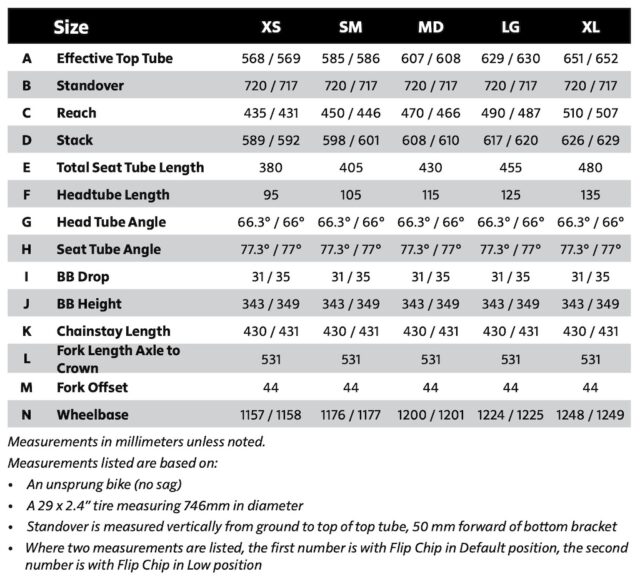
The Builds
As mentioned earlier, Salsa has given the Spearfish four different builds, with the two lower-end ones using the standard carbon layup while the two higher-end builds get the lighter DLX construction. All of the builds come with 120 mm travel forks. The least expensive option is the Deore 12 build, which gets a RockShox SID fork and Deluxe Select+ shock, along with a Shimano Deore drivetrain and two-piston MT-M410 brakes with Deore levers. The wheels use Shimano TC500 hubs and WTB KOM Team rims, and a TranzX RAD+ adjustable dropper completes the package.
Stepping up to the Eagle 90 Transmission build, the fork gets upgraded to a RockShox SID Select+ fork, and the rear shock swaps to the lighter SIDLuxe Select+. The SRAM DB8 brakes are a bit burlier than the two-piston ones on the cheaper build, the wheels are slightly nicer WTB ASYM i30 rims on WTB Frequency hubs, and SRAM’s mechanical Eagle 90 Transmission setup handles shifting.

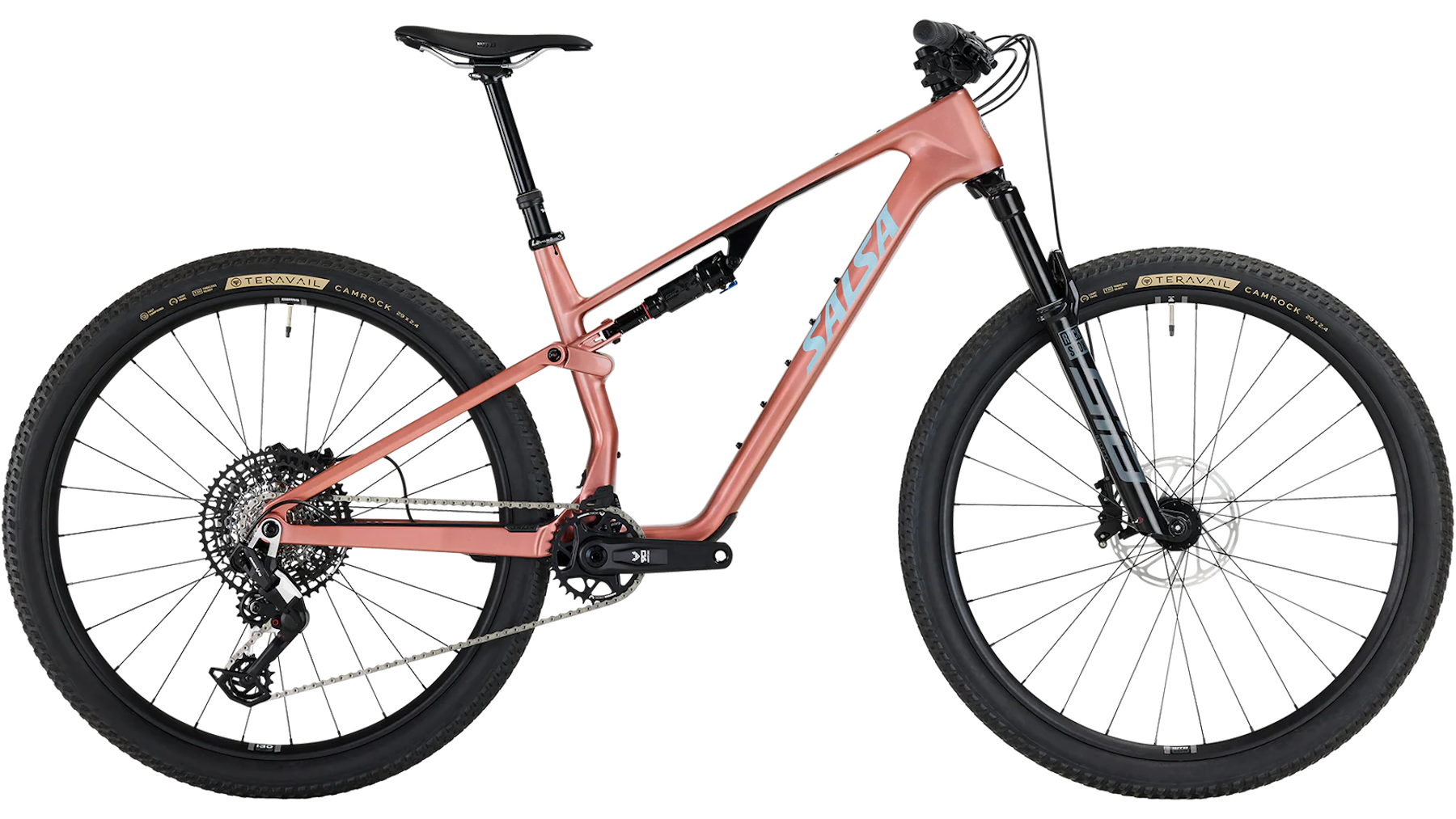
The Spearfish DLX GX Transmission (which we’re testing) is the first model to get the lighter DLX frame, and it also jumps to Fox suspension via a 34 SL Performance Elite fork and Float SL Performance Elite shock. SRAM’s electronic GX Transmission handles shifting, while their Motive Bronze brakes handle stopping duties. The wheels are again supplied by WTB, this time with KOM Light i30 rims on their Frequency hubs.
The fanciest build is the Spearfish DLX XO Transmission, which goes back to RockShox suspension with the SID Ultimate Flight Attendant fork and SIDLuxe Ultimate Flight Attendant shock. The electronics continue with the XO Transmission shifting and the Reverb AXS dropper. The brakes are SRAM’s Motive Ultimate. This is also the only bike in the range to get carbon wheels, in the form of WTB CZR Trail Carbon i30 rims laced to their Frequency hubs.
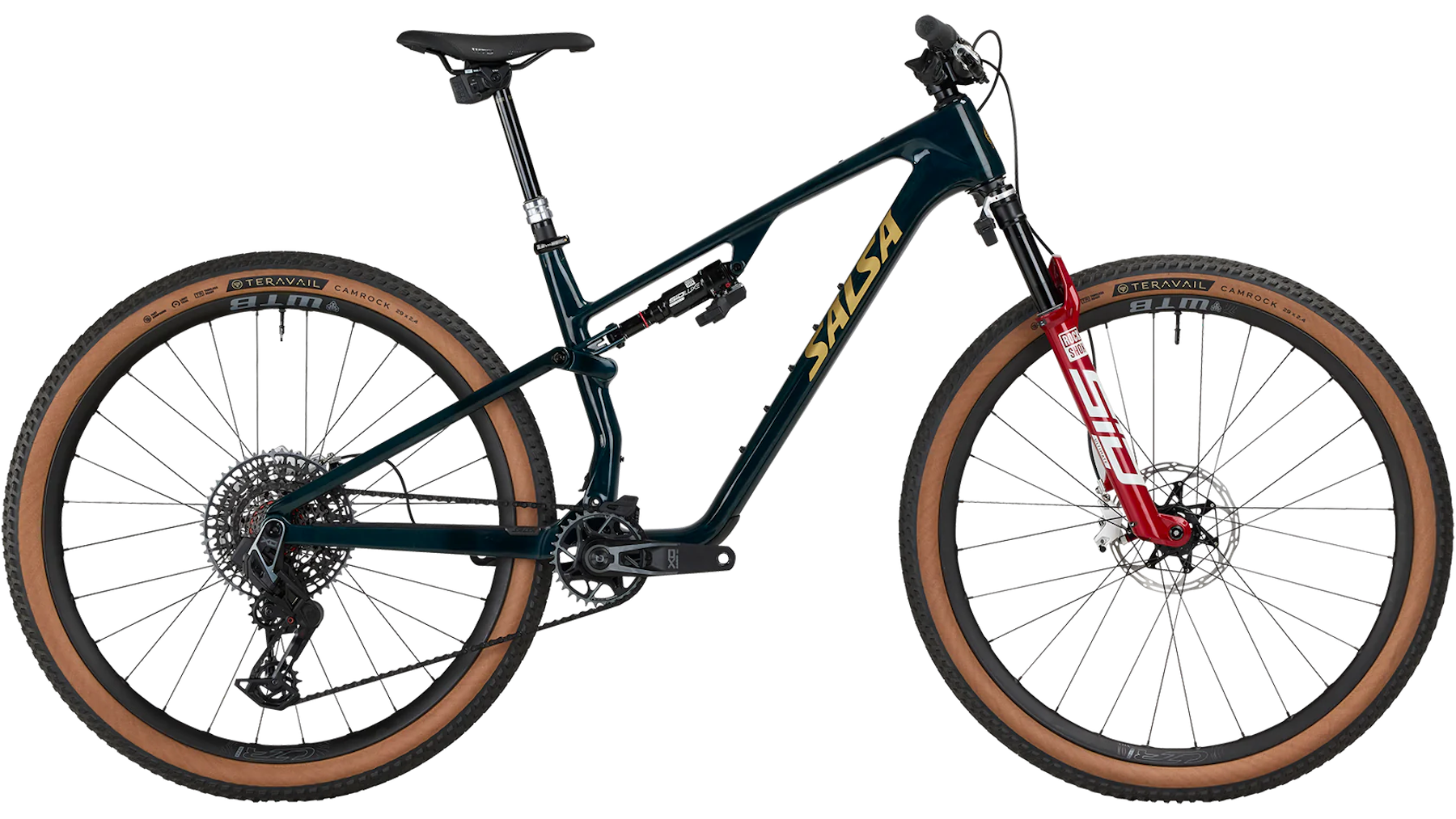
All builds in the lineup get Teravail’s Camrock 2.4 tires in the Light Trail casing and come with a diminutive chainguide.
The Deore build weighs a claimed 29.81 lbs / 13.52 kg, while the lightest DLX XO Transmission build drops as low as 26.06 lbs / 11.82 kg.
The full build details are as follows:
- Drivetrain: Shimano Deore M6100
- Brakes: Shimano Deore M6120 (180 mm rotors)
- Fork: RockShox SID (120 mm)
- Shock: RockShox Deluxe Select+
- Wheels: WTB KOM Team i30 rims, Shimano TC500 hubs
- Dropper post: TranzX RAD+ (XS: 125 mm, S–M: 150 mm, L–XL: 170 mm)
- Drivetrain: SRAM Eagle 90 Transmission
- Brakes: SRAM DB8 (180 mm rotors)
- Fork: RockShox SID Select+ (120 mm)
- Shock: RockShox SIDLuxe Select+
- Wheels: WTB ASYM i30 rims, WTB Frequency hubs
- Dropper post: TranzX RAD+ (XS: 125 mm, S–M: 150 mm, L–XL: 170 mm)
- Drivetrain: SRAM XO Transmission
- Brakes: SRAM Motive Bronze (180 mm rotors)
- Fork: Fox 34 SL Performance Elite Grip X (120 mm)
- Shock: Fox Float SL Performance Elite
- Wheels: WTB KOM Light i30 rims, WTB Frequency hubs
- Dropper post: TranzX RAD+ (XS: 125 mm, S–M: 150 mm, L–XL: 170 mm)
- Drivetrain: SRAM XO Transmission
- Brakes: SRAM Motive Ultimate (180 mm rotors)
- Fork: RockShox SID Ultimate Flight Attendant (120 mm)
- Shock: RockShox SIDLuxe Ultimate Flight Attendant
- Wheels: WTB CZR Trail Carbon i30 rims, WTB Frequency hubs
- Dropper post: RockShox Reverb AXS (XS: 125 mm, S–M: 150 mm, L–XL: 170 mm)
A frame-only Spearfish DLX costs $3,499 and includes a Fox Float SL Factory rear shock.
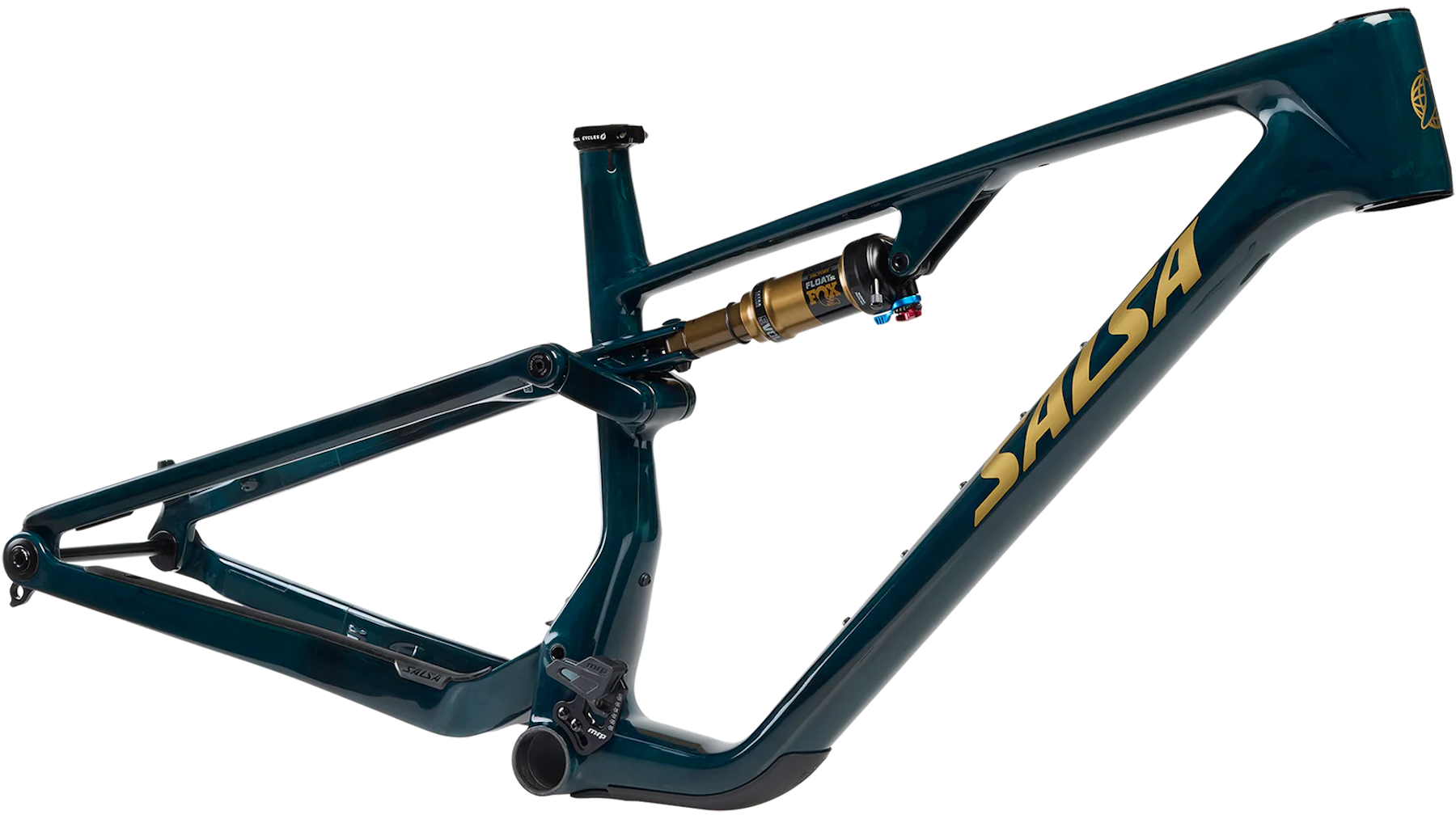
FULL REVIEW
Several of our recent reviews of shorter-travel bikes have harped on how excited we are about the evolution of XC bikes into their modern form. While some have placed these sorts of bikes in their own new category (and no, I won’t use the “D” word), I would instead argue that these bikes still deserve to be called XC bikes, but reflect the evolution of that side of the sport toward more technically demanding and variable trails and race courses.
It has felt like every brand has been rushing to throw their hat into the ring with a revamped XC platform, but it was perhaps surprising to see one of the more recent entrants coming from a brand that had been fairly quiet until recently — Salsa.
The Spearfish is not a new bike for Salsa, but this new version is a strikingly big step forward in geometry from the old one. We’ve been testing the Spearfish DLX in the GX Transmission build for the past few months, and it’s been an impressive little bike that we think deserves a good, hard look for lots of riders. Let’s dig into why that is.
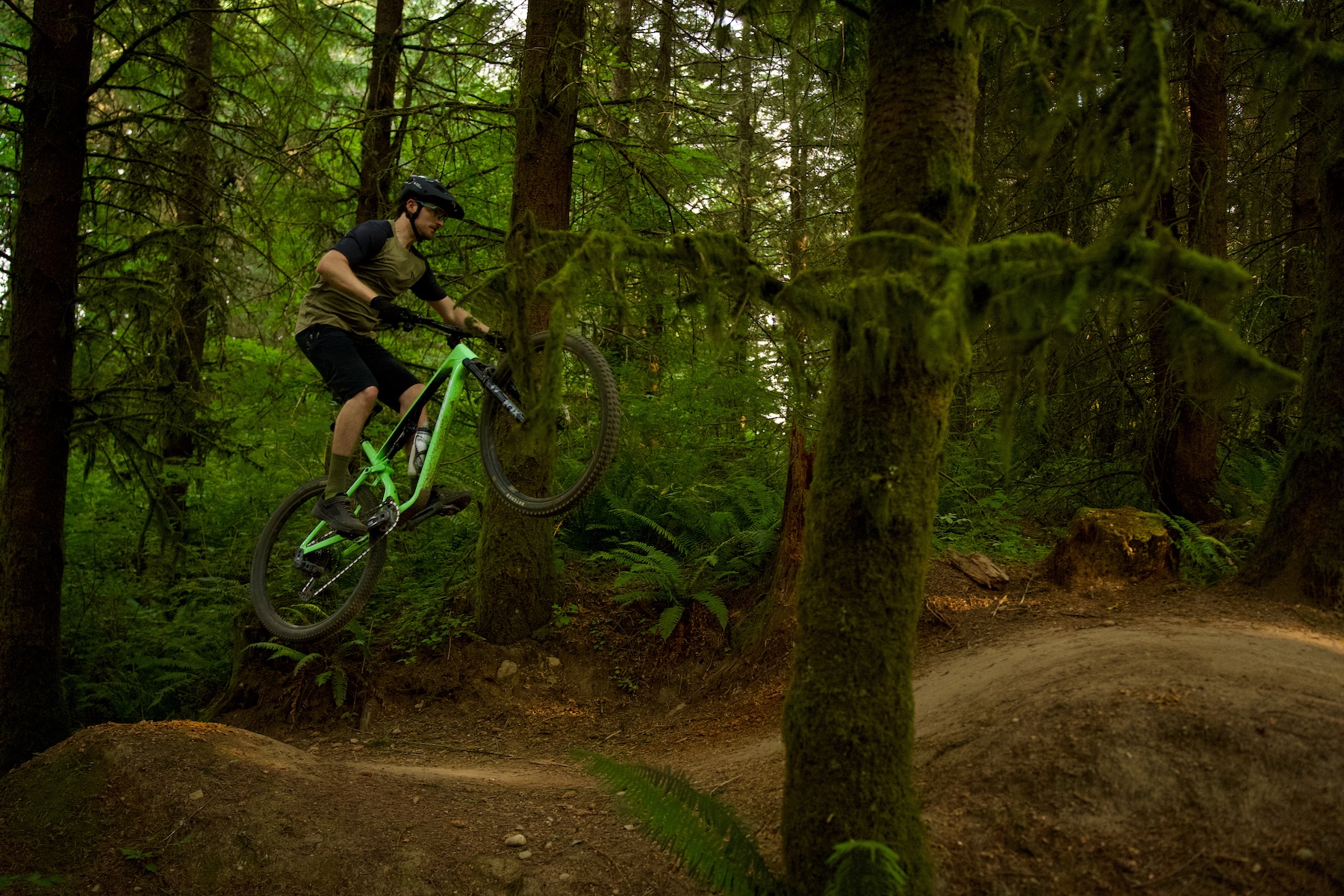
Fit & Sizing
While the Spearfish DLX looks like a pretty long bike (for an XC rig) based solely at its reach figure, I think that Salsa has done an excellent job putting together geometry that feels efficient, yet comfortable, even when pushed beyond the Spearfish’s intended use.
The Spearfish has a flip chip at the shock mount, but I ended up running it in Low for nearly the entire test period, as I generally got along with the slightly slacker seat tube angle, lower bottom bracket, and slacker head tube angle. The differences are quite minor between High and Low, but the Low setting yielded a shorter 487 mm reach (size Large), 35 mm bottom bracket drop, and a steep (for an XC bike) 77° seat tube angle. The Spearfish’s reach is longer than pretty much anything I’ve tried in the XC category to date, but once I had stacked a few spacers under the stem to bring up the handlebar height, I found it to be comfortable while giving me a stretched, stable body position while descending. On the climbs, the 630 mm effective top tube felt just right for my preference, and the 66° head tube angle and short 431 mm chainstays helped make flicking the bike around tight corners a breeze, even during high-output pedaling.
While the Spearfish will look pretty big compared to some other XC bikes on the market, I was glad to have gone with the size Large for my 6’ / 183 cm height, especially once I had stacked some spacers under the stem, and found that the longer-than-average reach figure still felt snappy on the climbs while paying dividends on the descent.
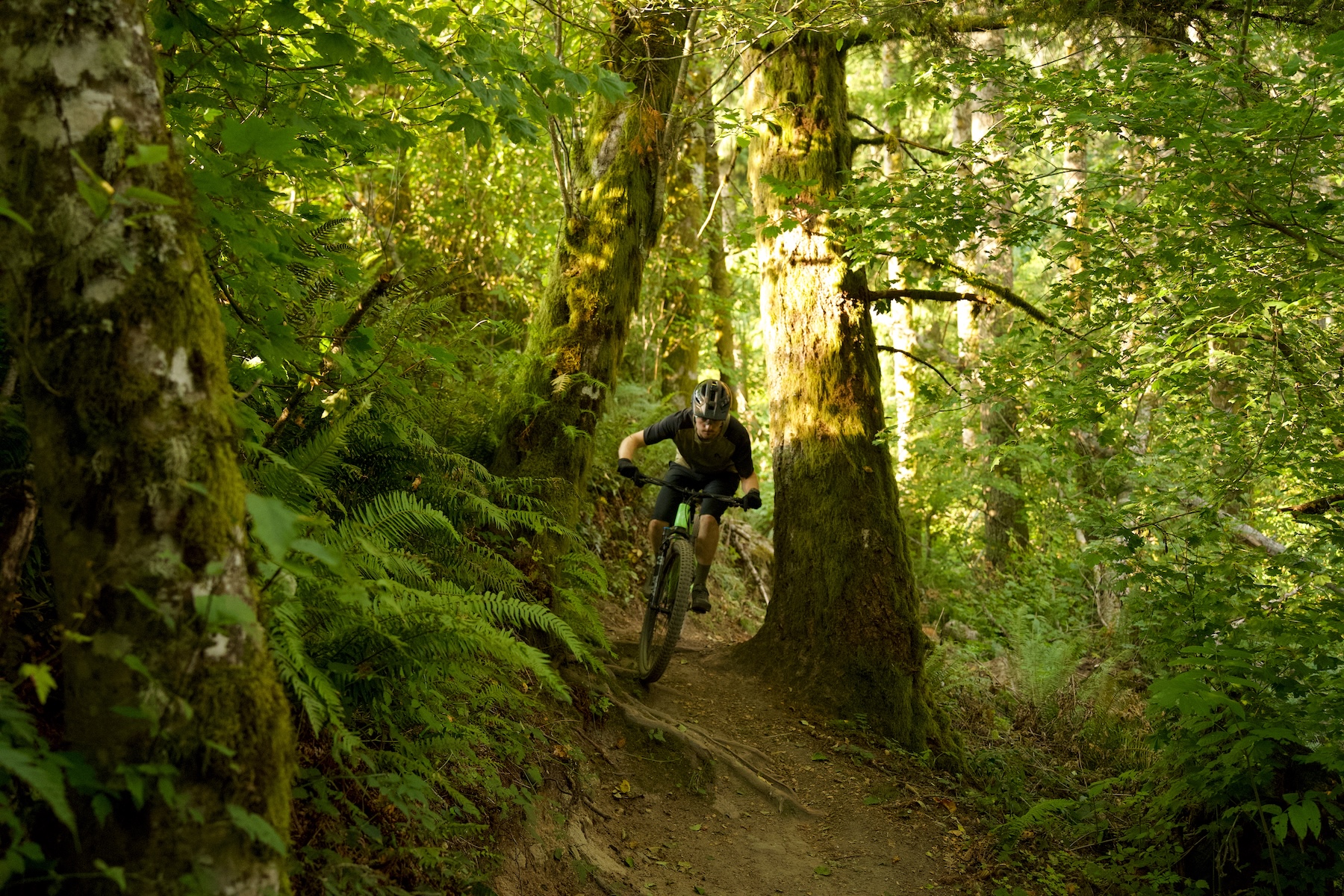
Climbing
Speaking of climbing, the Spearfish is (perhaps unsurprisingly) very good on the way up the hill.
The 66° head tube angle in the Low position still isn’t quite as slack as a few other XC bikes that we’ve tested (Specialized’s Epic Evo goes as slack as 65.4°, while the Trek Top Fuel goes to 65.5°), but it’s still pretty close while being a lot slacker than the 67° and even 68° head angles we saw just a few years ago. The Spearfish retains good stiffness under power, and the short chainstays combined with the relatively steep head tube angle make quick direction changes engaging and easy.
The Spearfish’s 77° seat tube angle in Low stands out a bit from the slacker seat tube angles of many of its peers (for example, the Trek Top Fuel rings in at 75.9° in a Large), but I didn’t find myself minding the more upright position for the most part. It encourages a less traditionally stretched out body position — one that might feel a bit too upright if most of my riding was on flatter trails — but for rolling XC trails with some punchy ups and downs, it still felt efficient and comfortable. For longer, steeper ascents, that steeper seat tube angle helps to keep a more forward weight bias, keeping the front end tracking nicely despite the short chainstays.
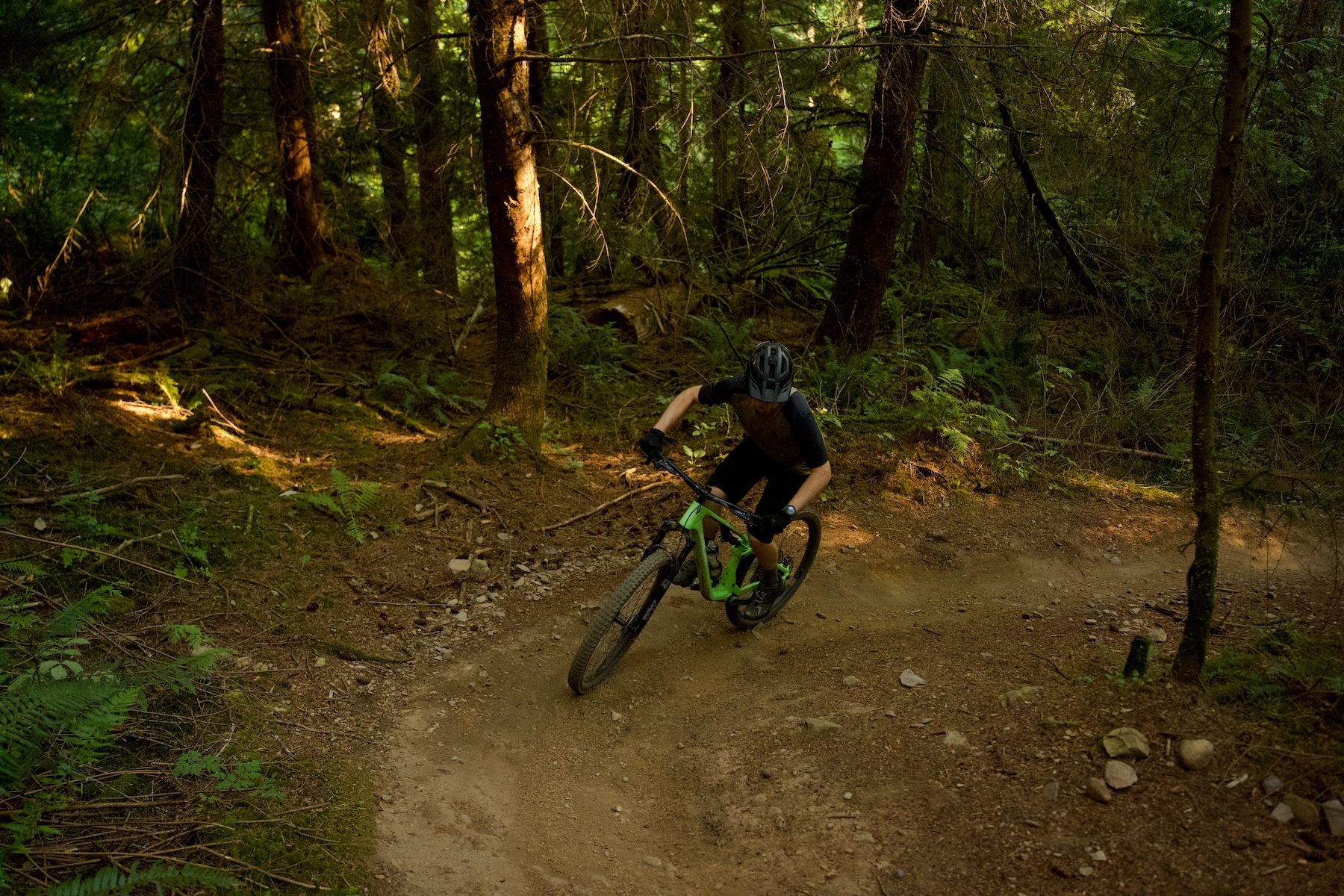
Speaking of efficiency, Salsa has done well with the Spearfish’s sporty yet compliant rear suspension feel. There’s only 120 mm of travel back there, but it manages to be smooth and grippy at the top end while still feeling taut through the middle part of the travel. The result is good traction on sketchy climbs, but plenty of encouragement for keeping a high pace — the Spearfish is an XC bike after all, and it delivers against those expectations with snappy response at the pedals.
While it is rewarding to ride at a high pace, it doesn’t quite bring the livewire feel that some other XC bikes do. It doesn’t match the Specialized Epic Evo in its pedaling performance, for example, but that’s largely due to the somewhat unforgiving yet uber-efficient shock tune on Epic Evo’s Fox Float shock. I played a bit with the Spearfish’s three-position “open mode adjuster” dial on the Fox Float SL shock, and while each setting offers a distinct level of compression support, even the firmest isn’t near the damping levels of the Epic Evo. For day-to-day riding, the Spearfish’s middle setting proved to be my favorite for its balance of grip and support, but overall it feels like Salsa opted for a less aggressive shock tune than some other more high-strung bikes in order to bring a more balanced feel.
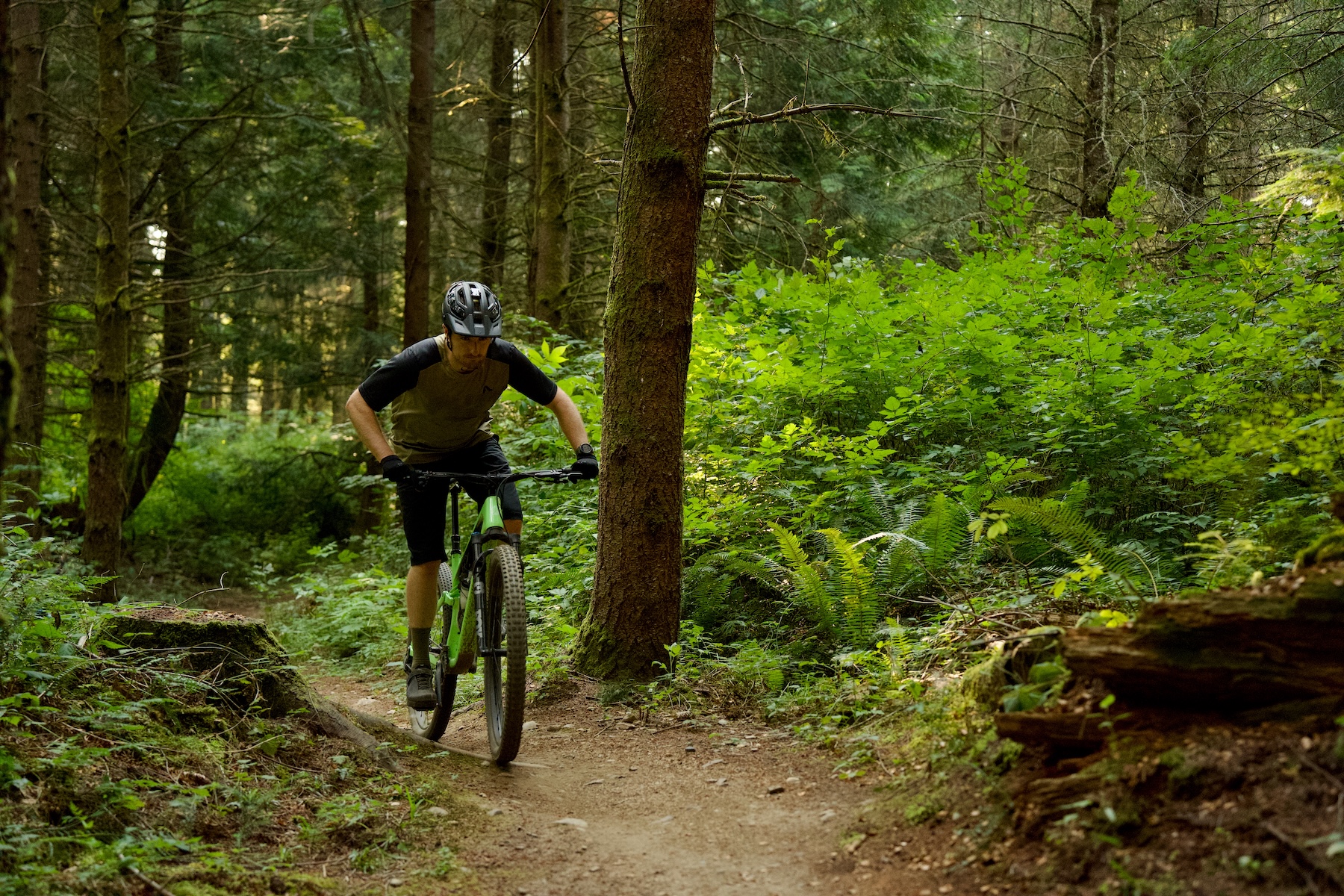
Descending
Right out of the gate, the Spearfish impressed me on the descents with how composed and fun it felt on a wide range of trails. While it felt particularly fast on smoother trails and returned a ton of energy when pumping, it still didn’t lose its composure like I thought it might on rougher sections. I wouldn’t say that it feels like it has more travel than it does, but it uses that limited 120 mm of front and rear travel efficiently while still feeling fairly forgiving in the middle portion of the travel.
I also want to give the frame’s balanced stiffness some of the credit for how well the Spearfish managed to back me up on trails that were a bit outside of its intended use. I’ve ridden some XC bikes that feel overly soft and noodly, hindering their responsiveness, while going too stiff can create a harsh and skittish feeling. The front of the Spearfish feels confidently stiff when changing direction, but there still seemed to be some welcome flex that helped to keep the bike tracking smoothly and took the sting out of inevitable bottom out moments.
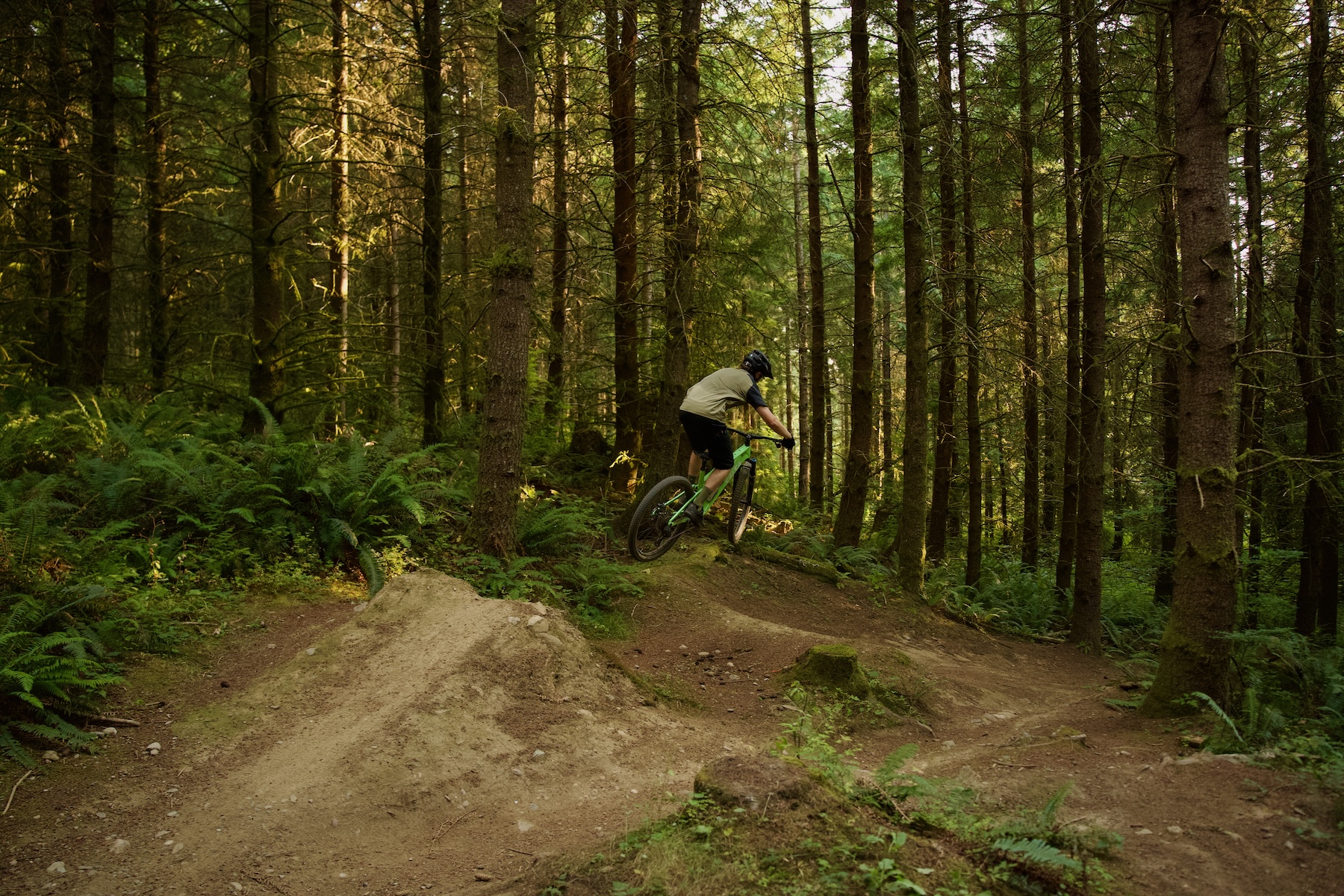
Descending aboard the Spearfish does still require a bit of attention to weighting the front end, primarily due to the very short 431 mm chainstays. Those super short chainstays were fun when knifing through tight corners, but hindered stability a bit as speeds crept up. I would have liked to see Salsa scale the Spearfish’s chainstay lengths up a bit on larger sizes like our size Large, especially considering how composed the suspension felt.
I often find myself running closer to 25% sag on XC bikes to help prop up the midstroke and avoid bottom outs, but 30% sag ended up being my sweet spot on the Spearfish. While I still used all of the travel on a fairly regular basis, I only experienced hard bottom outs a couple of times. It was again a testament to Salsa’s well-chosen combination of shock tune and suspension kinematics, which the 34 SL Grip X fork kept up with admirably.
The Build
The Spearfish DLX GX Transmission is the lower-tier of the two build options that feature the higher-end carbon construction of the DLX frame. At 26.46 lbs / 12.01 kg, it’s still pretty light, but not quite as featherweight as some other XC bikes that are dripping in carbon parts. For folks concerned with chasing grams, weight can be cut quite easily with some investment in things like lighter wheels, lighter cranks, etc.
My biggest component highlight was the Fox 34 SL Grip X fork. While it’s noticeably less stiff than the thicker-stanchioned RockShox Pike or Fox 36, it does a very admirable job of merging good damper performance with better tracking than I would expect for such a lightweight fork. The Float SL rear shock was no slouch either, working well with the Spearfish’s rear suspension design.
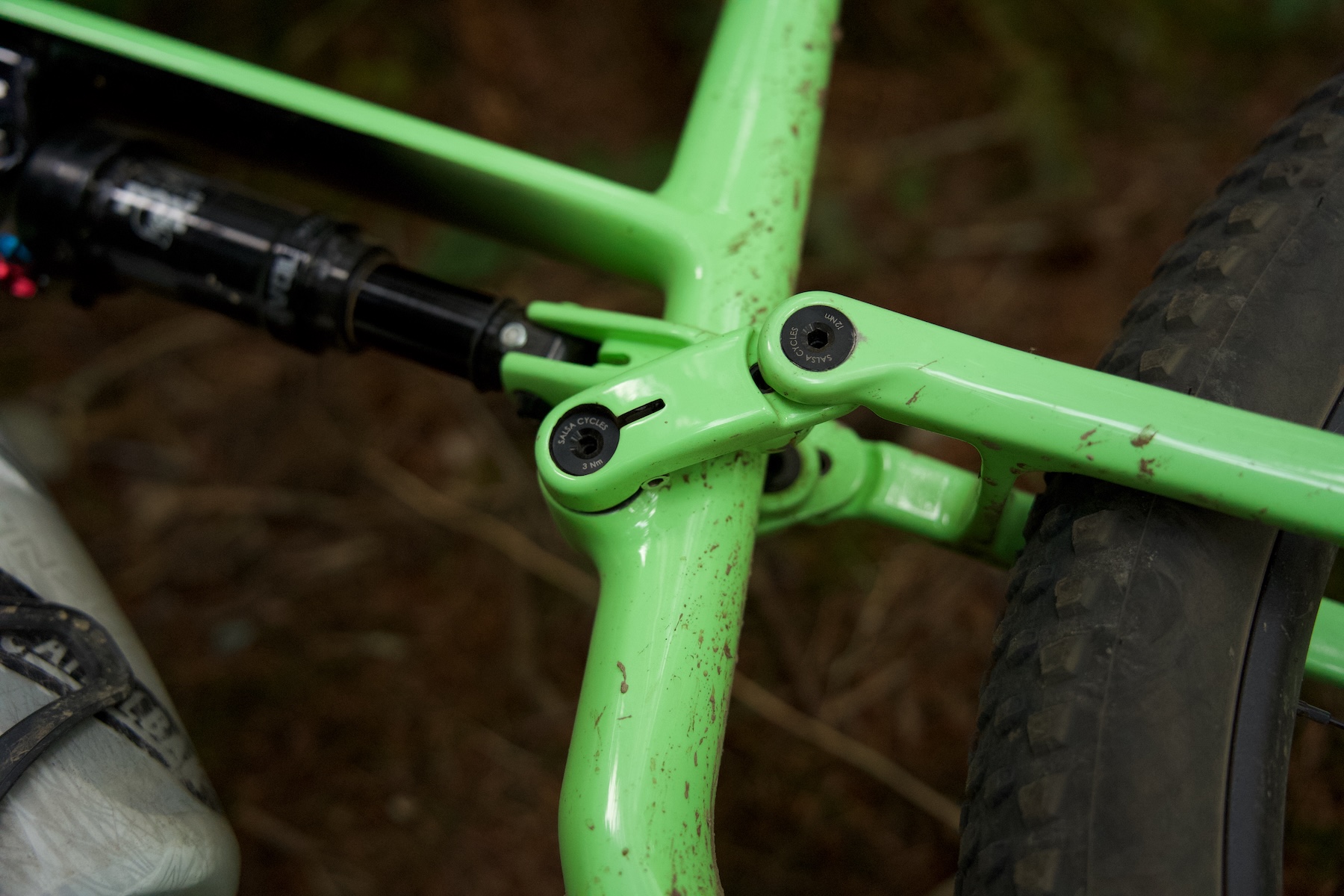
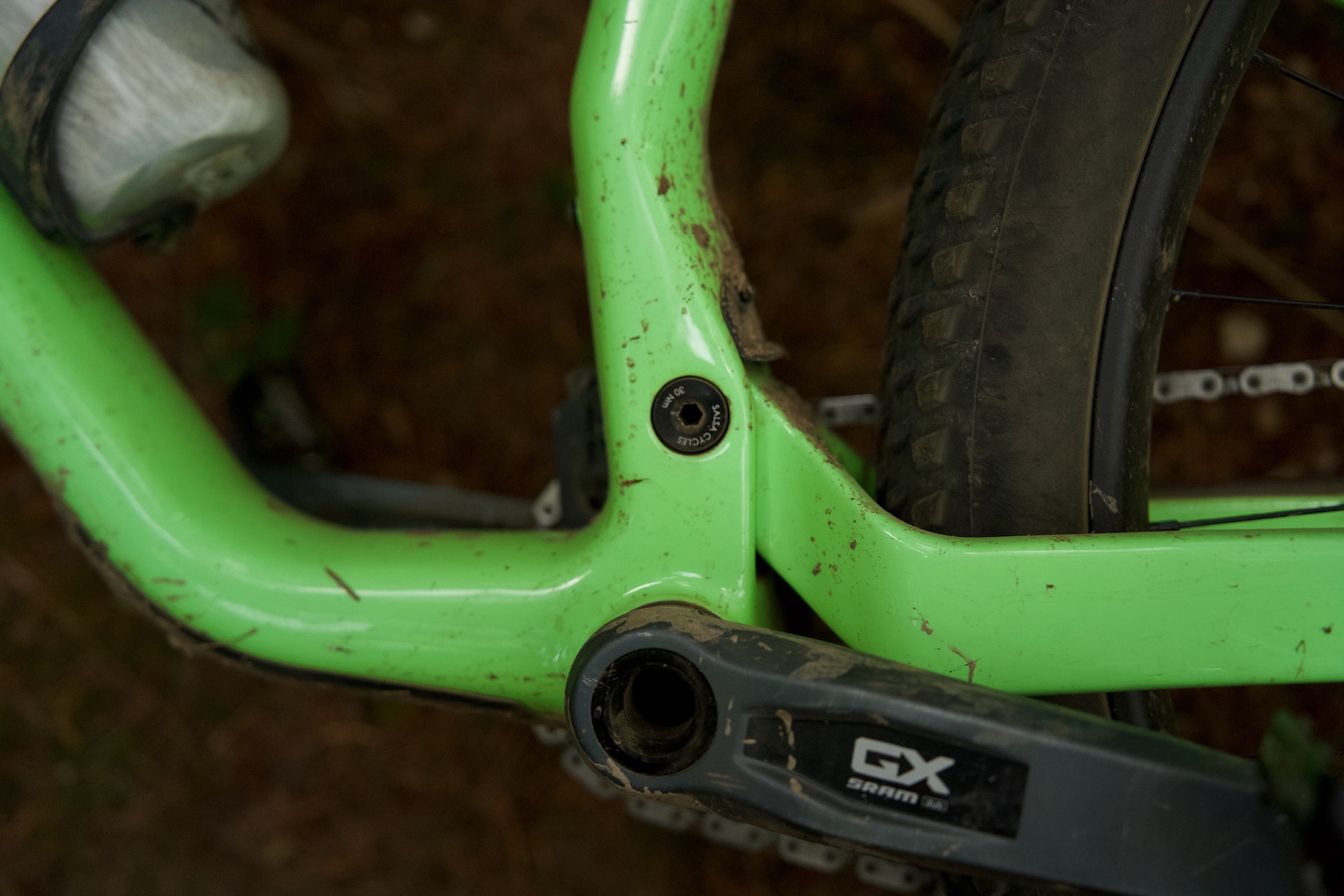
The SRAM Motive Ultimate brakes I’ve been testing have been a promising option for the XC/Trail category, and while the Motive Bronze were still solid, they weren’t on par with the Ultimates. They’re still far better than the underpowered SRAM Level, but I found the lever feel to be a bit wooden while still not delivering quite as much power as I would have liked. Upsizing the front rotor could likely help, and swapping from the Centerline X rotor to a thicker HS2 might help with heat management.
The Teravail Camrock tires roll quickly and feel pretty cushy thanks to their very high-volume casing, but I ended up opting for a more aggressive front tire for most of my testing. The Camrock tires are well-suited to hardpack and roll fast, but looser and more technical trails can go beyond their limits of traction quite quickly. The very thin casing and high air volume could feel squirmy on rough trails and at higher speeds, and I prefer something with a slightly softer rubber and sturdier cornering knobs.
Who’s It For?
Salsa’s new Spearfish should have broad appeal within the XC category. There are lighter and sharper-handling bikes out there to be sure, but the Spearfish stands out for how it blends a comfortable geometry and ride quality with good climbing efficiency and descending performance. XC riders who want something that can venture into more technical terrain would be well served by the Spearfish, and folks who typically ride more aggressively on Enduro and Trail bikes will find the Spearfish to bring a good dose of spice to local trails without feeling overly sketchy.
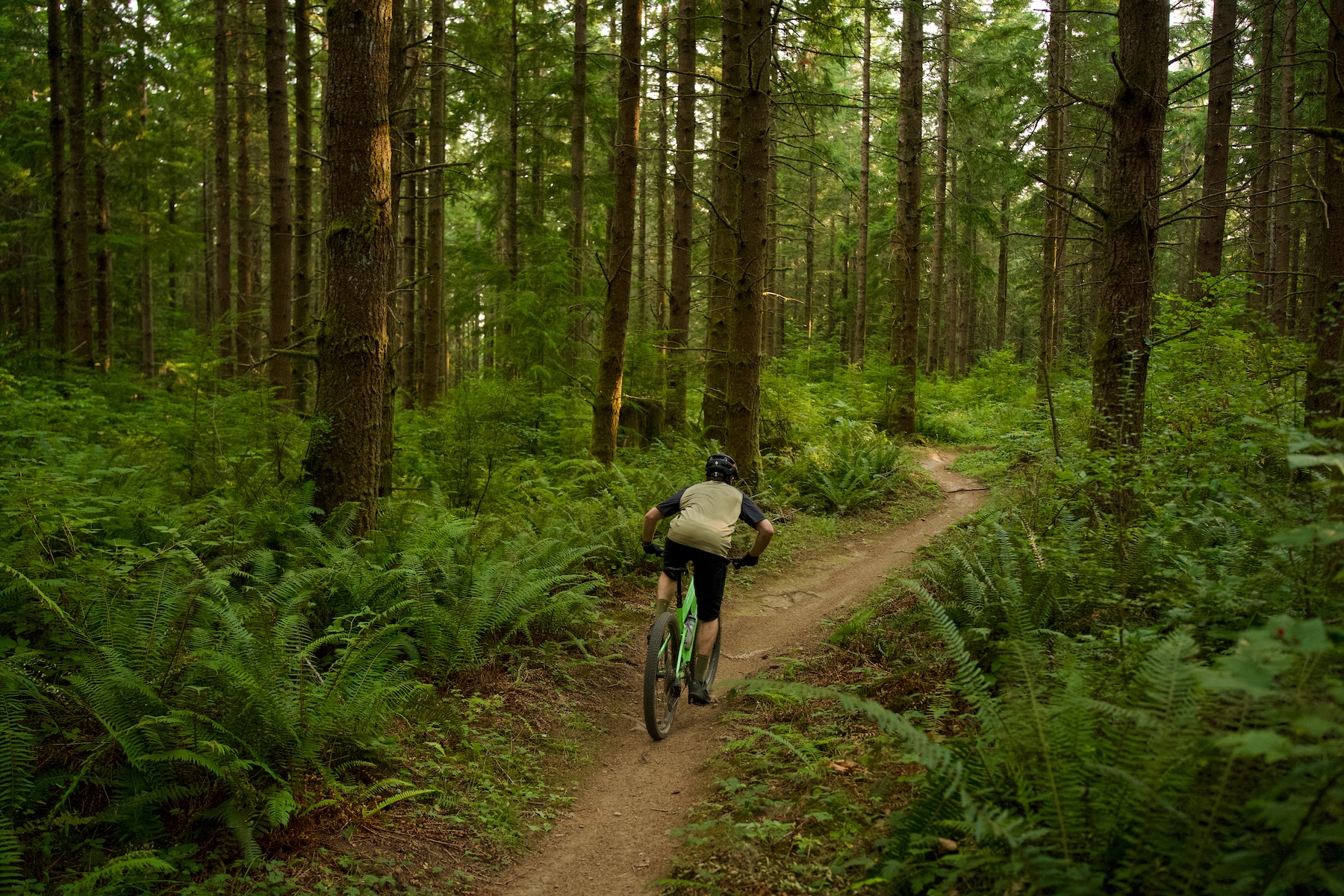
Bottom Line
I’ve been on a bit of an XC kick as of late, and the Spearfish has been a welcome part of it. It brings some of the addictive levels of efficiency and response that make covering ground on an XC bike so satisfying, but where other bikes have been developed with XC racing in mind, the Spearfish feels like it sacrifices a small bit of efficiency for a lot more playfulness and composure. As a result, it’s still fun on technical lines while bringing some added challenge over burlier Trail bikes. It still falls firmly in the XC category, but comes with a more versatile twist that should appeal to a lot of riders.
Deep Dive Comparisons
BLISTER+ members and those who purchase our Digital Access Pass can check out our Deep Dive comparisons linked below. Get our Digital Access Pass to view all our Deep Dives and Flash Reviews, or become a BLISTER+ member today to get access to that and a LOT more, including the best worldwide Outdoor Injury Insurance, exclusive deals and discounts on skis, personalized gear recommendations from us, and much more.

Deep Dive: Salsa Spearfish
We compare the Salsa Spearfish to the Trek Top Fuel, Specialized Epic Evo, Pivot Trailcat SL, and Yeti ASR.
Blister’s Flash Reviews and Deep Dives are accessible to those who purchase one of our paid subscriptions
To get our comprehensive Deep Dives and our initial, unfiltered reports on new gear, become a member and receive many other services, deals, and discounts.
If you’re already an active member, please log in.
(If you’re already logged in and a member in good standing and seeing this message in error, please refresh this page in your browser.)
